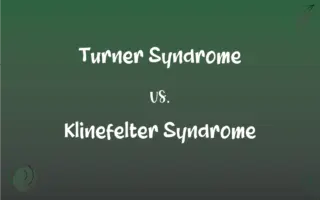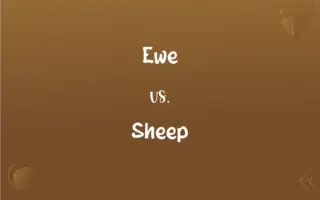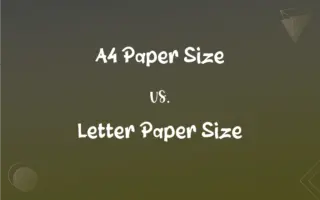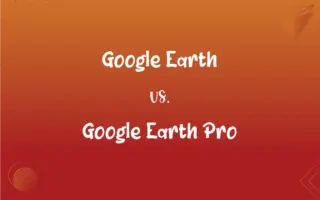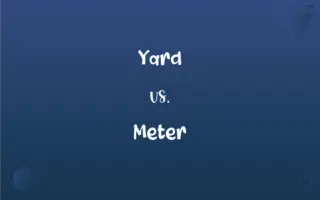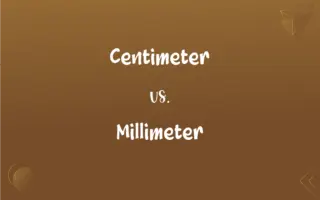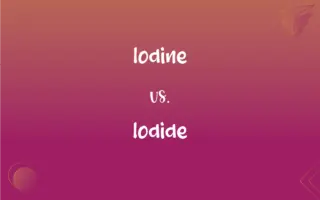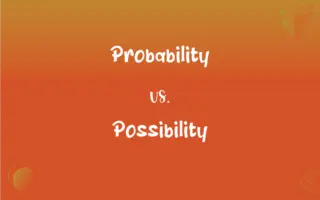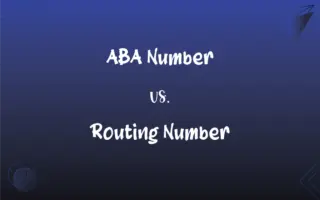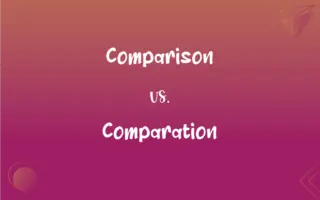Distance vs. Displacement: What's the Difference?
Edited by Aimie Carlson || By Harlon Moss || Updated on October 17, 2023
Distance is the total path traveled, while displacement is the straight-line change in position.
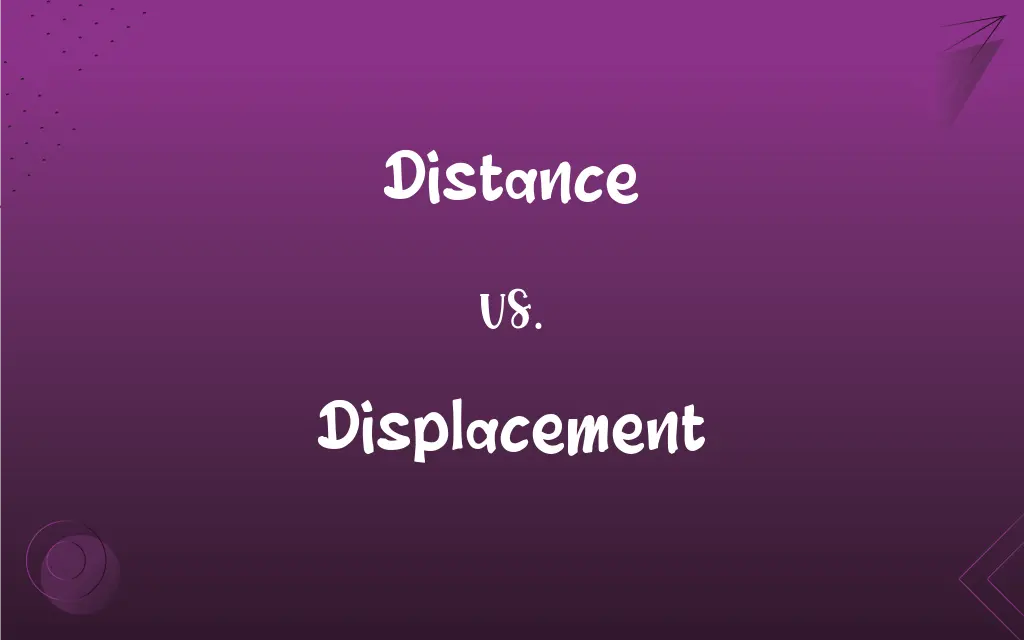
Key Differences
Distance and displacement, both essential in physics, measure movement. Distance refers to the total length or path an object travels, without any consideration for the direction. In simple terms, if you were to walk in circles, your distance would account for every step taken, regardless of where you started or ended. On the other hand, displacement provides a direct measure from the starting point to the endpoint, giving a sense of both magnitude and direction.
Distance always has a non-negative value, since it's merely a cumulative measure of how much ground an object has covered. Whether you travel forward, backward, or in zigzags, the distance keeps adding up. Displacement, however, can be zero, positive, or negative, representing the object's net change in position. Walking 10 meters east and then 10 meters west results in a significant distance traveled but zero displacement.
Understanding the difference between distance and displacement is crucial in kinematics, the branch of physics dealing with motion. While distance might indicate how much effort was expended, displacement reveals the effectiveness of that effort. If a person walks around a large field and returns to the starting point, their distance might be several kilometers, but the displacement would be zero.
Interestingly, distance is a scalar quantity, meaning it only possesses magnitude. Displacement, contrastingly, is a vector quantity, having both magnitude and a specific direction. For example, stating that someone traveled 5 miles gives the distance, but saying they traveled 5 miles north provides displacement.
Comparison Chart
Definition
Total path traveled
Straight-line change in position
ADVERTISEMENT
Value
Always non-negative
Can be negative, zero, or positive
Quantity Type
Scalar (only magnitude)
Vector (magnitude and direction)
Affected by Path
Yes (every part of the path counts)
No (only start and end points matter)
Example
Walking in circles
Walking from point A to point B
Distance and Displacement Definitions
Distance
Distance is a scalar quantity.
The distance between the two towns is 50 miles.
ADVERTISEMENT
Displacement
Displacement can have negative, positive, or zero values.
Walking back to the starting point gives a displacement of zero.
Distance
Distance is always non-negative.
Regardless of the path he took, the distance remained 5 miles.
Displacement
Displacement indicates the net change in position.
His displacement was 5 miles east.
Distance
Distance measures the total path covered.
She covered a distance of 10 miles during her morning run.
Displacement
Displacement can be smaller than, equal to, or greater than distance.
Walking in a straight line gives a distance equal to the displacement.
Distance
Distance does not specify direction.
The distance from her home to the school is 2 miles.
Displacement
Displacement is a vector quantity.
A 10-meter displacement south differs from 10 meters north.
Distance
Distance accumulates with movement.
His daily walking distance adds up quickly.
Displacement
Displacement considers both magnitude and direction.
The displacement between two cities might be 50 miles northwest.
Distance
The extent of space between two objects or places; an intervening space.
Displacement
The act of displacing.
Distance
The fact or condition of being apart in space; remoteness.
Displacement
The condition of having been displaced.
FAQs
What does distance represent?
Distance denotes the total path an object has traveled.
Can distance ever be negative?
No, distance is always a non-negative value.
Why is displacement considered a vector?
Because it has both magnitude and direction.
When is displacement zero?
When the starting and ending points are the same.
How does direction factor into displacement?
Displacement always has a specified direction, like north or south.
In what scenarios would displacement be more important than distance?
In navigation, to find the shortest path between two points.
How does displacement differ from distance?
Displacement is the straight-line change in position with a direction.
Can you have a large distance but small displacement?
Yes, like walking around a track and stopping close to where you started.
Which is more straightforward, distance or displacement?
Distance, as it doesn't require direction.
Why can distance and displacement be the same?
If an object moves in a straight line without turning back.
Do distance and displacement have the same units?
Yes, typically meters or kilometers.
Is the distance around a circle's circumference its displacement?
No, the displacement would be the diameter or zero if ending at the start.
Can direction change displacement's value?
Yes, moving opposite to the initial direction can decrease it.
If someone says they traveled 10 miles north, are they giving distance or displacement?
Displacement, due to the direction provided.
Why might an athlete care about distance more than displacement?
To track how much they've run or biked, regardless of start and end points.
Why is displacement often used in physics problems?
It's more precise, accounting for both distance and direction.
Can you determine distance using displacement?
Not entirely, as displacement doesn't account for the entire path traveled.
Can displacement be greater than distance?
No, displacement is always less than or equal to distance.
Is the distance between two cities the same as the displacement?
Only if you travel in a straight line between them.
How does one calculate displacement?
By finding the straight-line distance and direction between start and end.
About Author
Written by
Harlon MossHarlon is a seasoned quality moderator and accomplished content writer for Difference Wiki. An alumnus of the prestigious University of California, he earned his degree in Computer Science. Leveraging his academic background, Harlon brings a meticulous and informed perspective to his work, ensuring content accuracy and excellence.
Edited by
Aimie CarlsonAimie Carlson, holding a master's degree in English literature, is a fervent English language enthusiast. She lends her writing talents to Difference Wiki, a prominent website that specializes in comparisons, offering readers insightful analyses that both captivate and inform.

